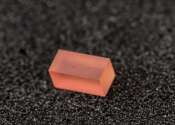The California Institute of Technology or Caltech is a private institution governed by a Board of Trustees. Caltech began as Throop College of Technology in 1891. Under the direction of Nobel Prize physicist Robert Andrews Millikan and the newly formed Research Council, Caltech was created in 1921. In subsequent years Caltech has emerged as a highly focused institution of learning. Annually, Caltech accepts less than 2200 exceptionally gifted undergraduate and graduate students for enrollment. The core curriculum is divided into six categories; Division of Biology, Division of Chemistry and Chemical Engineering, Division of Engineering and Applied Sciences, Division of Geological and Planetary Science, Division of Humanities and Social Sciences, Division of Physics, Mathematics and Astronomy. Caltech operates (manages) The Jet Propulsion Laboratory, The Mount Wilson Observatory, Spitzer Space Telescope and other endeavors .Caltech was home to Murray Gell-Mann and Richard Feynman and 31 Nobel Laureates, 49 U.S. Medal of Science recipients and 10 National Medal of Technology recipients. Caltech is accepted world-wide as an institute of scientific and academic excellence.
- Address
- 1200 East California Blvd. Pasadena, CA 91125
- Website
- http://www.caltech.edu/#
- Wikipedia
- http://en.wikipedia.org/wiki/California_Institute_of_Technology
Some content from Wikipedia,
licensed under CC BY-SA
Subscribe to rss feed









